1776 – American Revolution: The United States Declaration of Independence is adopted by the Second Continental Congress.
The United States Declaration of Independence is the statement adopted by the Second Continental Congress meeting at the Pennsylvania State House (now known as Independence Hall) in Philadelphia, Pennsylvania, on July 4, 1776. The Declaration announced that the Thirteen Colonies at war with the Kingdom of Great Britain would regard themselves as thirteen independent sovereign states, no longer under British rule. With the Declaration, these new states took a collective first step toward forming the United States of America. The declaration was signed by representatives from New Hampshire, Massachusetts Bay, Rhode Island, Connecticut, New York, New Jersey, Pennsylvania, Maryland, Delaware, Virginia, North Carolina, South Carolina, and Georgia.
1803 – The Louisiana Purchase is announced to the U.S. people.
The Louisiana Purchase (French: Vente de la Louisiane 'Sale of Louisiana') was the acquisition of the territory of Louisiana by the United States from France in 1803. In return for fifteen million dollars, the U.S. acquired a total of 828,000 sq mi (2,140,000 km2; 530,000,000 acres). The treaty was negotiated by French Treasury Minister François Barbé-Marbois (acting on behalf of Napoleon) and American delegates James Monroe and Robert R. Livingston (acting on behalf of President Thomas Jefferson).
The Kingdom of France had controlled the Louisiana territory from 1699 until it was ceded to Spain in 1762. In 1800, Napoleon, then the First Consul of the French Republic, regained ownership of Louisiana as part of a broader project to re-establish a French colonial empire in North America. However, France's failure to put down a revolt in Saint-Domingue, coupled with the prospect of renewed warfare with the United Kingdom, prompted Napoleon to consider selling Louisiana to the United States.
Here are some US stamps and a First Day Cover depicting the Louisiana Purchase

1807 Born: Giuseppe Garibaldi
Giuseppe Maria Garibaldi (4 July 1807 – 2 June 1882) was an Italian general and nationalist. A republican, he contributed to the Italian unification and the creation of the Kingdom of Italy. He is considered one of the greatest generals of modern times and one of Italy's "fathers of the fatherland" along with Camillo Benso, Count of Cavour, Victor Emmanuel II of Italy and Giuseppe Mazzini.
Garibaldi is also known as the "Hero of the Two Worlds" because of his military enterprises in Brazil, Uruguay, and Europe.He commanded and fought in many military campaigns that eventually led to the Italian unification. In 1848, the provisional government of Milan made Garibaldi a general, and in 1849, the Minister of War promoted him to General of the Roman Republic to lead the Expedition of the Thousand on behalf and with the consent of Victor Emmanuel II. His last military campaign took place during the Franco-Prussian War, as commander of the Army of the Vosges.
Having conquered Sicily, he crossed the Strait of Messina and marched north. Garibaldi's progress was met with more celebration than resistance, and on 7 September he entered the capital city of Naples, by train. Despite taking Naples, however, he had not to this point defeated the Neapolitan army. Garibaldi's volunteer army of 24,000 was not able to defeat conclusively the reorganized Neapolitan army—about 25,000 men—on 30 September at the battle of Volturno. This was the largest battle he ever fought, but its outcome was effectively decided by the arrival of the Piedmontese Army.
Some stamps from Italy, Monaco and the United States depicting Garibaldi
1817 – In Rome, New York, construction on the Erie Canal begins.
The Erie Canal is a canal in New York, United States that is part of the east–west, cross-state route of the New York State Canal System (formerly known as the New York State Barge Canal). Originally, it ran 363 miles (584 km) from where Albany meets the Hudson River to where Buffalo meets Lake Erie. It was built to create a navigable water route from New York City and the Atlantic Ocean to the Great Lakes. When completed in 1825, it was the second longest canal in the world (after the Grand Canal in China) and greatly affected the development and economy of New York, New York City, and the United States.
These 3 presidents died on July 4th
1826 Died: John Adams, American lawyer and politician, 2nd President of the United States (b. 1735)
John Adams (October 30, 1735 – July 4, 1826) was an American statesman, attorney, diplomat, writer, and Founding Father who served as the second president of the United States from 1797 to 1801. Before his presidency he was a leader of the American Revolution that achieved independence from Great Britain, and also served as the first vice president of the United States. Adams was a dedicated diarist and regularly corresponded with many important figures in early American history including his wife and adviser, Abigail, and his letters and other papers are an important source of historical information about the era.
United States stamps depicting John Adams
1826 Died: Thomas Jefferson, American architect, lawyer, and politician, 3rd President of the United States (b. 1743)
Thomas Jefferson (April 13, 1743 – July 4, 1826) was an American statesman, diplomat, lawyer, architect, and Founding Father who served as the third president of the United States from 1801 to 1809. Previously, he had served as the second vice president of the United States from 1797 to 1801. The principal author of the Declaration of Independence, Jefferson was a proponent of democracy, republicanism, and individual rights motivating American colonists to break from the Kingdom of Great Britain and form a new nation; he produced formative documents and decisions at both the state and national level.
During the American Revolution, he represented Virginia in the Continental Congress that adopted the Declaration, drafted the law for religious freedom as a Virginia legislator, and served as the second Governor of Virginia from 1779 to 1781, during the American Revolutionary War. He became the United States Minister to France in May 1785, and subsequently, the nation's first secretary of state under President George Washington from 1790 to 1793. Jefferson and James Madison organized the Democratic-Republican Party to oppose the Federalist Party during the formation of the First Party System. With Madison, he anonymously wrote the provocative Kentucky and Virginia Resolutions in 1798 and 1799, which sought to strengthen states' rights by nullifying the federal Alien and Sedition Acts.
As president, Jefferson pursued the nation's shipping and trade interests against Barbary pirates and aggressive British trade policies. He also organized the Louisiana Purchase, almost doubling the country's territory. As a result of peace negotiations with France, his administration reduced military forces. He was reelected in 1804. Jefferson's second term was beset with difficulties at home, including the trial of former vice president Aaron Burr. American foreign trade was diminished when Jefferson implemented the Embargo Act of 1807, in response to British threats to U.S. shipping. In 1803, Jefferson began a controversial process of Indian tribe removal to the newly organized Louisiana Territory, and he signed the Act Prohibiting Importation of Slaves in 1807. After retiring from public office, Jefferson founded the University of Virginia.
Jefferson, while primarily a planter, lawyer and politician, mastered many disciplines, which ranged from surveying and mathematics to horticulture and mechanics. He was an architect in the classical tradition. Jefferson's keen interest in religion and philosophy led to his presidency of the American Philosophical Society; he shunned organized religion but was influenced by both Christianity and deism. A philologist, Jefferson knew several languages. He was a prolific letter writer and corresponded with many prominent people. His only full-length book is Notes on the State of Virginia (1785), considered perhaps the most important American book published before 1800.
Although Jefferson is regarded as a leading spokesman for democracy and republicanism in the era of the Enlightenment, some modern scholarship has been critical of Jefferson, finding a contradiction between his ownership and trading of many slaves that worked his plantations, and his famous declaration that "all men are created equal". Although the matter remains a subject of debate, most historians believe that Jefferson had a sexual relationship with his slave Sally Hemings, a mixed-race woman who was a half-sister to his late wife and that he fathered at least one of her children. Presidential scholars and historians generally praise Jefferson's public achievements, including his advocacy of religious freedom and tolerance in Virginia. Jefferson continues to rank highly among U.S. presidents.
United States Thomas Jefferson stamps
1831 Died: James Monroe, American soldier, lawyer, and politician, 5th President of the United States (b. 1758)
James Monroe (April 28, 1758 – July 4, 1831) was an American statesman, lawyer, diplomat, and Founding Father who served as the fifth president of the United States from 1817 to 1825. A member of the Democratic-Republican Party, Monroe was the last president of the Virginia dynasty, and his presidency coincided with the Era of Good Feelings. He is perhaps best known for issuing the Monroe Doctrine, a policy of opposing European colonialism in the Americas. He also served as the governor of Virginia, a member of the United States Senate, the U.S. ambassador to France and Britain, the seventh Secretary of State, and the eighth Secretary of War.
United States James Monroe stamps
Garibaldi is also known as the "Hero of the Two Worlds" because of his military enterprises in Brazil, Uruguay, and Europe.He commanded and fought in many military campaigns that eventually led to the Italian unification. In 1848, the provisional government of Milan made Garibaldi a general, and in 1849, the Minister of War promoted him to General of the Roman Republic to lead the Expedition of the Thousand on behalf and with the consent of Victor Emmanuel II. His last military campaign took place during the Franco-Prussian War, as commander of the Army of the Vosges.
Having conquered Sicily, he crossed the Strait of Messina and marched north. Garibaldi's progress was met with more celebration than resistance, and on 7 September he entered the capital city of Naples, by train. Despite taking Naples, however, he had not to this point defeated the Neapolitan army. Garibaldi's volunteer army of 24,000 was not able to defeat conclusively the reorganized Neapolitan army—about 25,000 men—on 30 September at the battle of Volturno. This was the largest battle he ever fought, but its outcome was effectively decided by the arrival of the Piedmontese Army.
Some stamps from Italy, Monaco and the United States depicting Garibaldi
1817 – In Rome, New York, construction on the Erie Canal begins.
The Erie Canal is a canal in New York, United States that is part of the east–west, cross-state route of the New York State Canal System (formerly known as the New York State Barge Canal). Originally, it ran 363 miles (584 km) from where Albany meets the Hudson River to where Buffalo meets Lake Erie. It was built to create a navigable water route from New York City and the Atlantic Ocean to the Great Lakes. When completed in 1825, it was the second longest canal in the world (after the Grand Canal in China) and greatly affected the development and economy of New York, New York City, and the United States.
These 3 presidents died on July 4th
1826 Died: John Adams, American lawyer and politician, 2nd President of the United States (b. 1735)
John Adams (October 30, 1735 – July 4, 1826) was an American statesman, attorney, diplomat, writer, and Founding Father who served as the second president of the United States from 1797 to 1801. Before his presidency he was a leader of the American Revolution that achieved independence from Great Britain, and also served as the first vice president of the United States. Adams was a dedicated diarist and regularly corresponded with many important figures in early American history including his wife and adviser, Abigail, and his letters and other papers are an important source of historical information about the era.
United States stamps depicting John Adams
1826 Died: Thomas Jefferson, American architect, lawyer, and politician, 3rd President of the United States (b. 1743)
Thomas Jefferson (April 13, 1743 – July 4, 1826) was an American statesman, diplomat, lawyer, architect, and Founding Father who served as the third president of the United States from 1801 to 1809. Previously, he had served as the second vice president of the United States from 1797 to 1801. The principal author of the Declaration of Independence, Jefferson was a proponent of democracy, republicanism, and individual rights motivating American colonists to break from the Kingdom of Great Britain and form a new nation; he produced formative documents and decisions at both the state and national level.
During the American Revolution, he represented Virginia in the Continental Congress that adopted the Declaration, drafted the law for religious freedom as a Virginia legislator, and served as the second Governor of Virginia from 1779 to 1781, during the American Revolutionary War. He became the United States Minister to France in May 1785, and subsequently, the nation's first secretary of state under President George Washington from 1790 to 1793. Jefferson and James Madison organized the Democratic-Republican Party to oppose the Federalist Party during the formation of the First Party System. With Madison, he anonymously wrote the provocative Kentucky and Virginia Resolutions in 1798 and 1799, which sought to strengthen states' rights by nullifying the federal Alien and Sedition Acts.
As president, Jefferson pursued the nation's shipping and trade interests against Barbary pirates and aggressive British trade policies. He also organized the Louisiana Purchase, almost doubling the country's territory. As a result of peace negotiations with France, his administration reduced military forces. He was reelected in 1804. Jefferson's second term was beset with difficulties at home, including the trial of former vice president Aaron Burr. American foreign trade was diminished when Jefferson implemented the Embargo Act of 1807, in response to British threats to U.S. shipping. In 1803, Jefferson began a controversial process of Indian tribe removal to the newly organized Louisiana Territory, and he signed the Act Prohibiting Importation of Slaves in 1807. After retiring from public office, Jefferson founded the University of Virginia.
Jefferson, while primarily a planter, lawyer and politician, mastered many disciplines, which ranged from surveying and mathematics to horticulture and mechanics. He was an architect in the classical tradition. Jefferson's keen interest in religion and philosophy led to his presidency of the American Philosophical Society; he shunned organized religion but was influenced by both Christianity and deism. A philologist, Jefferson knew several languages. He was a prolific letter writer and corresponded with many prominent people. His only full-length book is Notes on the State of Virginia (1785), considered perhaps the most important American book published before 1800.
Although Jefferson is regarded as a leading spokesman for democracy and republicanism in the era of the Enlightenment, some modern scholarship has been critical of Jefferson, finding a contradiction between his ownership and trading of many slaves that worked his plantations, and his famous declaration that "all men are created equal". Although the matter remains a subject of debate, most historians believe that Jefferson had a sexual relationship with his slave Sally Hemings, a mixed-race woman who was a half-sister to his late wife and that he fathered at least one of her children. Presidential scholars and historians generally praise Jefferson's public achievements, including his advocacy of religious freedom and tolerance in Virginia. Jefferson continues to rank highly among U.S. presidents.
United States Thomas Jefferson stamps
1831 Died: James Monroe, American soldier, lawyer, and politician, 5th President of the United States (b. 1758)
James Monroe (April 28, 1758 – July 4, 1831) was an American statesman, lawyer, diplomat, and Founding Father who served as the fifth president of the United States from 1817 to 1825. A member of the Democratic-Republican Party, Monroe was the last president of the Virginia dynasty, and his presidency coincided with the Era of Good Feelings. He is perhaps best known for issuing the Monroe Doctrine, a policy of opposing European colonialism in the Americas. He also served as the governor of Virginia, a member of the United States Senate, the U.S. ambassador to France and Britain, the seventh Secretary of State, and the eighth Secretary of War.
United States James Monroe stamps
1872: Born: Calvin Coolidge, American lawyer and politician, 30th President of the United States (d. 1933)
Calvin Coolidge (July 4, 1872 – January 5, 1933) was an American politician and lawyer who served as the 30th president of the United States from 1923 to 1929. A Republican lawyer from New England, born in Vermont, Coolidge worked his way up the ladder of Massachusetts state politics, eventually becoming governor of Massachusetts. His response to the Boston Police Strike of 1919 thrust him into the national spotlight and gave him a reputation as a man of decisive action. The next year, he was elected vice president of the United States, and he succeeded to the presidency upon the sudden death of Warren G. Harding in 1923. Elected in his own right in 1924, he gained a reputation as a small government conservative and also as a man who said very little and had a rather dry sense of humor.
Coolidge restored public confidence in the White House after the scandals of his predecessor's administration, and left office with considerable popularity. As a Coolidge biographer wrote: "He embodied the spirit and hopes of the middle class, could interpret their longings and express their opinions. That he did represent the genius of the average is the most convincing proof of his strength".
Scholars have ranked Coolidge in the lower half of those presidents that they have assessed. He is praised by advocates of smaller government and laissez-faire economics, while supporters of an active central government generally view him less favorably, though most praise his stalwart support of racial equality.
US Stamps depicting Coolidge
1894 – The short-lived Republic of Hawaii is proclaimed by Sanford B. Dole.
The Republic of Hawaiʻi was the formal name of the nation of Hawaiʻi between July 4, 1894, when the Provisional Government of Hawaii ended, and August 12, 1898, when it was annexed by the United States as a territory of the United States. The Territory of Hawaii was formally established as part of the U.S. on June 14, 1900
Calvin Coolidge (July 4, 1872 – January 5, 1933) was an American politician and lawyer who served as the 30th president of the United States from 1923 to 1929. A Republican lawyer from New England, born in Vermont, Coolidge worked his way up the ladder of Massachusetts state politics, eventually becoming governor of Massachusetts. His response to the Boston Police Strike of 1919 thrust him into the national spotlight and gave him a reputation as a man of decisive action. The next year, he was elected vice president of the United States, and he succeeded to the presidency upon the sudden death of Warren G. Harding in 1923. Elected in his own right in 1924, he gained a reputation as a small government conservative and also as a man who said very little and had a rather dry sense of humor.
Coolidge restored public confidence in the White House after the scandals of his predecessor's administration, and left office with considerable popularity. As a Coolidge biographer wrote: "He embodied the spirit and hopes of the middle class, could interpret their longings and express their opinions. That he did represent the genius of the average is the most convincing proof of his strength".
Scholars have ranked Coolidge in the lower half of those presidents that they have assessed. He is praised by advocates of smaller government and laissez-faire economics, while supporters of an active central government generally view him less favorably, though most praise his stalwart support of racial equality.
US Stamps depicting Coolidge
1894 – The short-lived Republic of Hawaii is proclaimed by Sanford B. Dole.
The Republic of Hawaiʻi was the formal name of the nation of Hawaiʻi between July 4, 1894, when the Provisional Government of Hawaii ended, and August 12, 1898, when it was annexed by the United States as a territory of the United States. The Territory of Hawaii was formally established as part of the U.S. on June 14, 1900
1914 – The funeral of Archduke Franz Ferdinand and his wife Sophie takes place in Vienna, six days after their assassinations in Sarajevo.
Austrian military stamps depicting Archduke Franz Ferdinand and his wife Sophie
Austrian military stamps depicting Archduke Franz Ferdinand and his wife Sophie
1918 – Bolsheviks kill Tsar Nicholas II of Russia and his family (Julian calendar date).
There are several accounts of what happened and historians have not agreed on a solid, confirmed scope of events. According to the account of Yurovsky (the chief executioner), in the early hours of 17 July 1918, the royal family was awakened around 2:00 am, got dressed, and were led down into a half-basement room at the back of the Ipatiev house.
The executioners drew handguns and began shooting; Nicholas was the first to die. Yurovsky took credit afterwards for firing the first shot that killed the Tsar, but his protege – Grigory Nikulin – said years later that Mikhail Medvedev had fired the shot that killed Nicholas. "He fired the first shot. He killed the Tsar," he said in 1964 in a tape-recorded statement for the radio. Nicholas was shot several times in the chest (sometimes incorrectly said to have been shot in his head, but his skull bore no bullet wounds when it was discovered in 1991). Anastasia, Tatiana, Olga, and Maria survived the first hail of bullets; the sisters were wearing over 1.3 kilograms of diamonds and precious gems sewn into their clothing, which provided some initial protection from the bullets and bayonets. First they were stabbed with bayonets and then shot at close range in their heads.
Some Russian stamps depicting Tsar Nicholas II
There are several accounts of what happened and historians have not agreed on a solid, confirmed scope of events. According to the account of Yurovsky (the chief executioner), in the early hours of 17 July 1918, the royal family was awakened around 2:00 am, got dressed, and were led down into a half-basement room at the back of the Ipatiev house.
The executioners drew handguns and began shooting; Nicholas was the first to die. Yurovsky took credit afterwards for firing the first shot that killed the Tsar, but his protege – Grigory Nikulin – said years later that Mikhail Medvedev had fired the shot that killed Nicholas. "He fired the first shot. He killed the Tsar," he said in 1964 in a tape-recorded statement for the radio. Nicholas was shot several times in the chest (sometimes incorrectly said to have been shot in his head, but his skull bore no bullet wounds when it was discovered in 1991). Anastasia, Tatiana, Olga, and Maria survived the first hail of bullets; the sisters were wearing over 1.3 kilograms of diamonds and precious gems sewn into their clothing, which provided some initial protection from the bullets and bayonets. First they were stabbed with bayonets and then shot at close range in their heads.
Some Russian stamps depicting Tsar Nicholas II

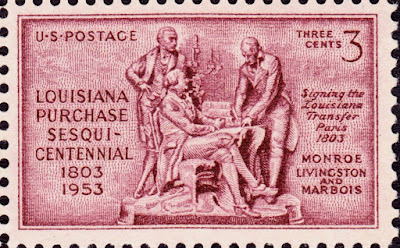


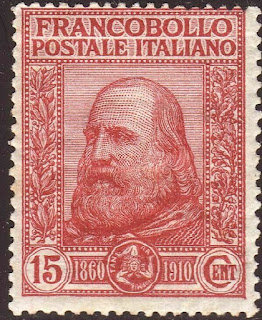
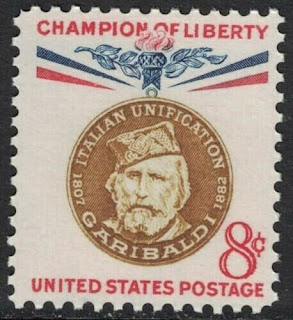

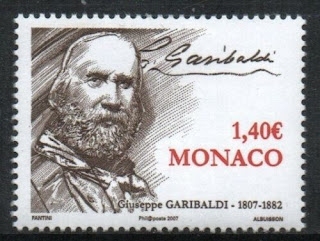










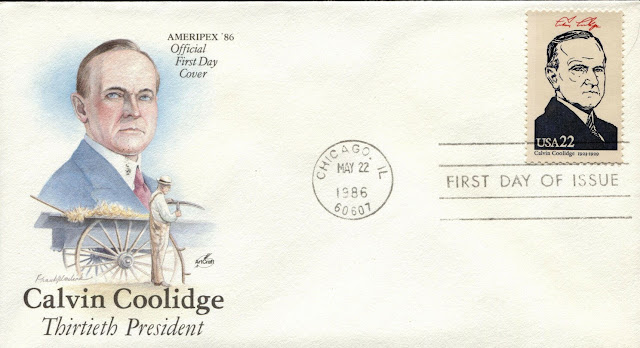




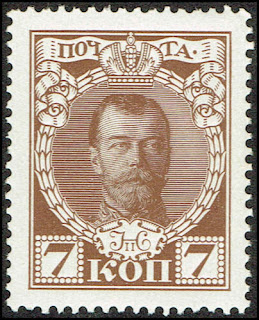
No comments:
Post a Comment